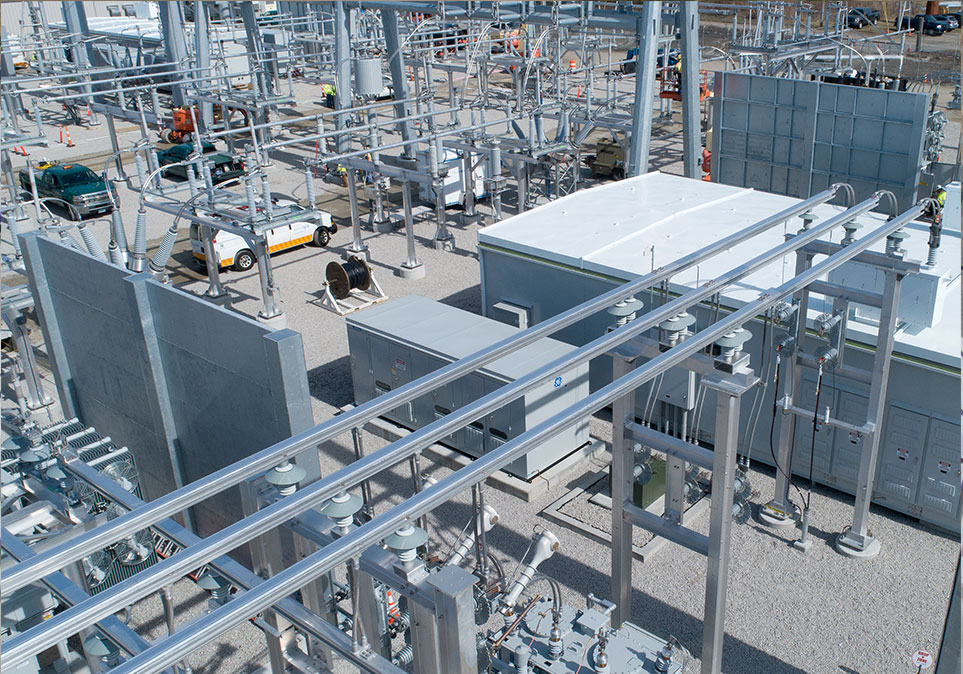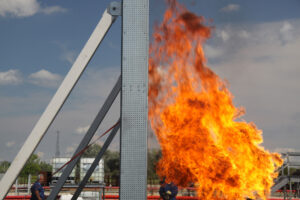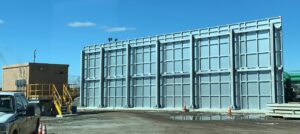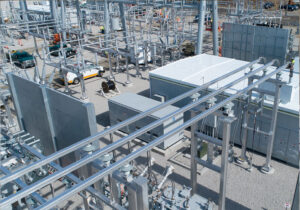In case you don’t know, fire protection has gone beyond active methods like the use of smoke detectors, fire extinguishers, sprinklers, and others. We now have several passive fire protection methods such as transformer firewall barrier, damper, and ballistic fire barrier.
Active fire protection can combat fire outbreaks, but when combined with passive fire protection methods, the process becomes easier and more effective.
What is Passive Fire Protection?
Passive fire protection (PFP) is a system built into the floors, walls, or ceiling of a building to reduce the spread of smoke or fire during fire outbreaks. PFP plays an essential role in saving lives and property by combining structural fire-resistant properties with compartmentalization techniques.
One major component of a passive fire protection system is the photoluminescent path markers. These path makers help light the way through smoke-filled fire exit paths. This helps in the evacuation of the building occupants
Categories Of Passive Fire Protection
There are different categories of passive fire protection, and some of them include;
- Structural Fire Protection
Structural fire protection safeguards the joints and structural steel holding buildings together. It utilizes fire-resistant materials such as insulation, cementitious products, gypsum-based plasters, fire-resistant cladding, spray-on intumescent, and other fireproof building materials. The structural fire protection helps keep the building in good condition even after a fire outbreak.
Firewalls also fall into this category because they give structural stability to the building. When building walls collapse during a fire outbreak, the building will not utterly fall into rubble; the firewall will keep the building standing.
- Compartmentation
Compartmentation is also an effective passive fire protection method. It involves the use of firewalls, fire barriers, smoke barriers, and fire partitions. These materials break the building or structure into compartments to stop the movement of the fire from one room to another.
- Opening Protection
Opening protection such as fire windows and fire doors are fixed into the opening of fire barriers to reinforce their fireproofing abilities. Smoke and fire dampers are examples of opening protection. These dampers work with fire barriers in the ventilation, heating, and conditioning duct system to prevent the movement of fire and smoke into the duct operating system. Dampers are often connected to fire alarm systems (active fire protection) so that the alarm can ring once the smoke passes through the dampers and the temperature of the duct rises.
- Firestopping Materials
During construction or building repair work, one may end up having to drill holes into the fire barriers to accommodate new building installation. Once the project is completed, it is important to block these holes. To do this, one needs to use fire stopping materials. This is so that those holes won’t be weak points for fire to move through during a fire outbreak. Firestopping materials prevent fire from penetrating through fire barriers.
Difference Between Passive Fire Protection and Active Fire Protection
A complete fire protection system requires that both active and passive fire protection be installed in buildings. However, not all buildings are constructed to support both protection systems.
While passive fire protection functions to prevent having a fully escalated fire, active fire protection combat a full-blown fire. Examples of active fire protection include fire extinguishers, fire alarms, door release mechanisms, gaseous suppressions, sprinklers, and more.
Costs Perspective of Installing Fire Protection
Giving a price quote for passive fire protection can be complicated because certain things should be considered before fixing a suitable price.
For older buildings, structures, or facilities that already have some level of compartmentalization, the cost of completing the compartments depends on the plumbing system of the building, electrical system, mechanical system, and fire barriers.
For new buildings or structures, the price will cover doors, frames, wall installation, firestopping holes, and more. It’ll also cover the cost of converting from non-resistance-rated construction to rated construction. You should also note that the quote you get is also dependent on the company offering the service.
The most significant thing to note is that the amount you’ll invest in passive fire protection can’t be compared to the value of lives and properties that will be saved when a fire eventually occurs.
Types of Passive Fire Protection
There are various types of PFP to choose from for your project. Some of them are listed below.
- Ballistic Fire Barrier
The ballistic fire barrier is a vital structural fire protection technology for large and tall buildings. It can offer fire protection for about 60 feet tall structures and 150 MPH wind load. They’re designed with steel and built into panels. The system is suitable for protecting industrial plants such as electrical transformers, thermal power plants, and others.
- Fireboxes
They’re stainless steel customized containers used in the onshore and offshore facilities of oil and gas industries. They have various layers of insulation that can offer close to 3 hours of fire protection during exposure to the jet fire load. The stainless steel keeps the firebox resistant to corrosion and weather. These boxes don’t require maintenance.
- Cable Tray Fire Barriers
Cable tray fire barriers are customizable, easy to install, and easy to maintain. They’re designed for the interior of buildings and can be installed on the ceiling of buildings or tunnels. The wires and cables are passed through the trays.
- Hydrogen Fire Barriers
Hydrogen is highly combustible, and a tiny spark could cause an explosion. Unfortunately, the introduction of hydrogen-powered vehicles has brought the dangers of hydrogen explosions closer to society. Thankfully, with hydrogen fire barriers fixed in the neighborhoods and fuel stations, the dangers of hydrogen fire explosions can be averted.
For more information on which type of fire barrier or protection system is the most suitable for your building, you should take some time to go through our website https://firebarrierexperts.com/. You will find different options available to you there. Alternatively, you could contact us and let us help you make the right decision.
Sinisi Solutions
75 Main St, Manasquan, NJ 08736
732-232-2100




